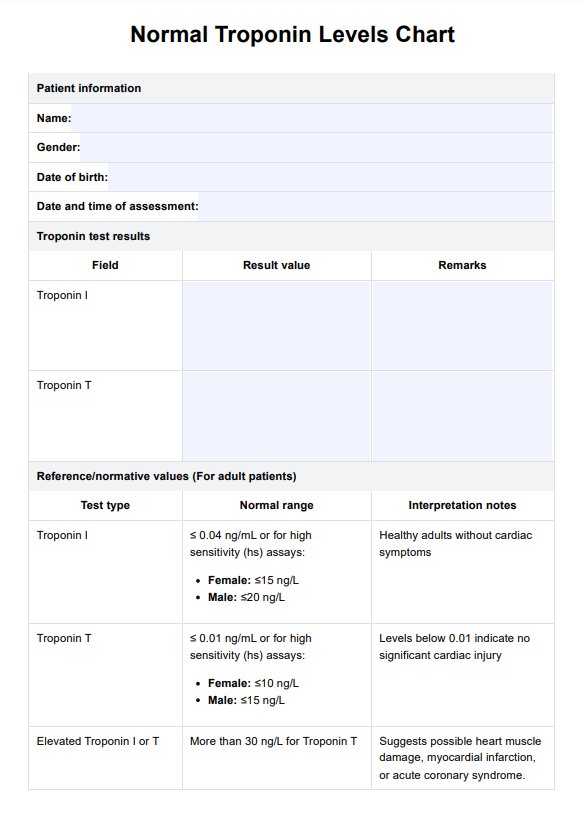An alarming troponin level is typically any value significantly above the standard reference range. Typically, levels above 0.04 ng/mL for troponin I or 0.01 ng/mL for troponin T indicate potential heart muscle damage. Values significantly above these thresholds suggest a higher likelihood of serious cardiac events, such as a heart attack, necessitating immediate medical attention.

Normal Troponin Levels
Use our Normal Troponin Levels Chart as a valuable tool in monitoring your patient’s condition post-heart attack.
Normal Troponin Levels Template
Commonly asked questions
Normal troponin levels are generally very low, often below 0.04 ng/mL for Troponin I, indicating no detectable heart muscle damage. Values within this range suggest healthy cardiac function, commonly found in individuals without symptoms of heart distress.
Yes, a troponin level of 12 ng/mL is considered extremely elevated and likely indicates significant cardiac injury. The standard reference range for troponin levels is typically 0–0.04 ng/mL for troponin I and 0–0.01 ng/mL for troponin T. Levels above these thresholds suggest heart muscle damage. Such high levels warrant urgent medical intervention to prevent further heart damage.
EHR and practice management software
Get started for free
*No credit card required
Free
$0/usd
Unlimited clients
Telehealth
1GB of storage
Client portal text
Automated billing and online payments











